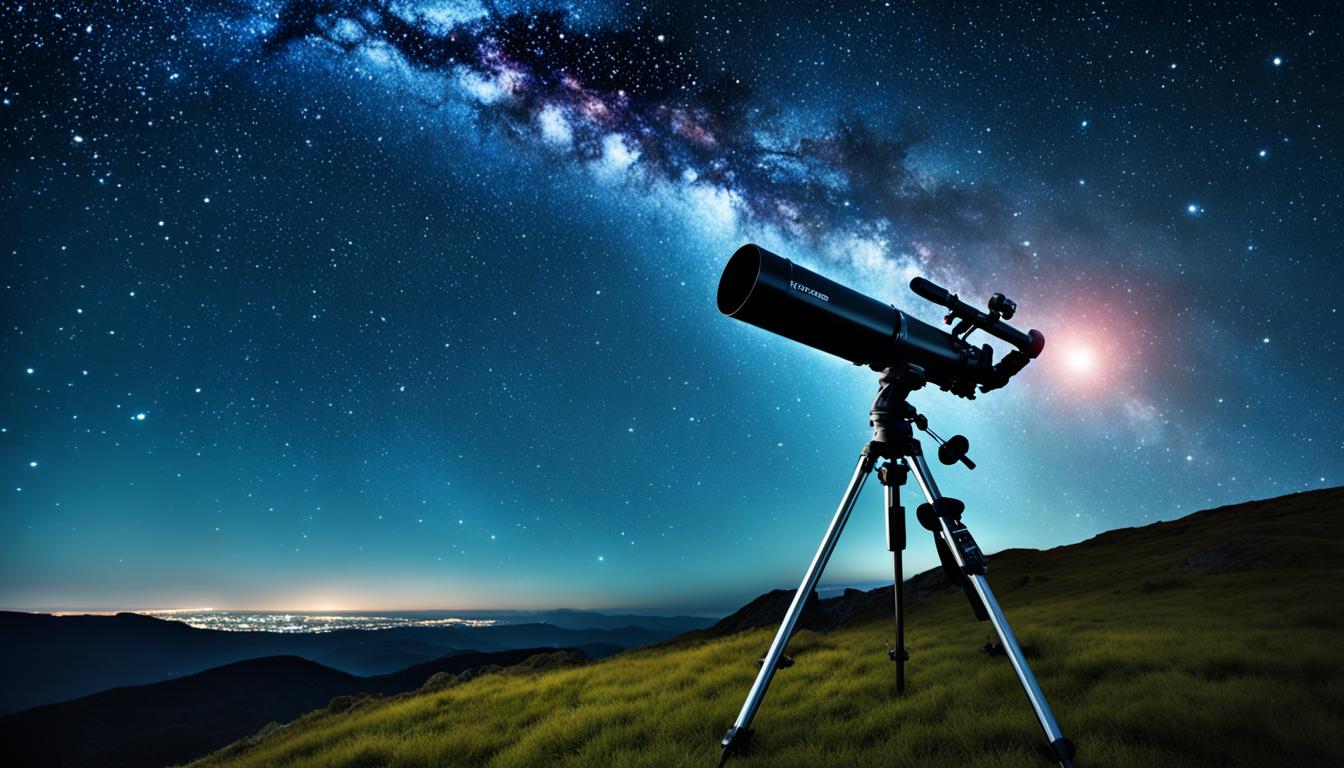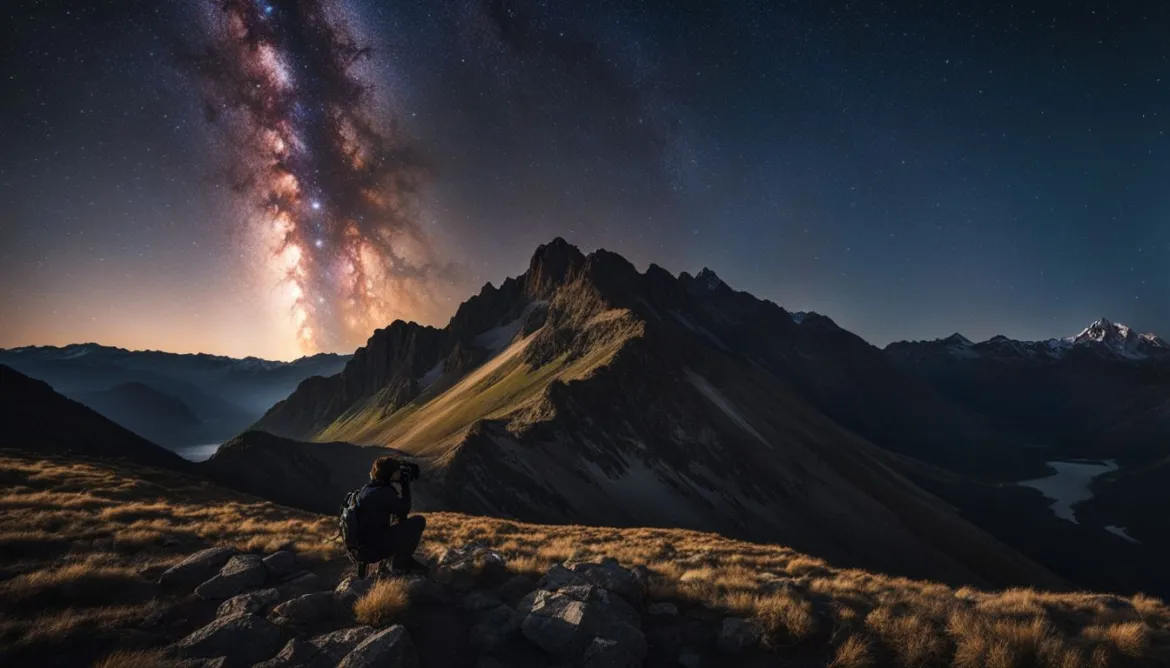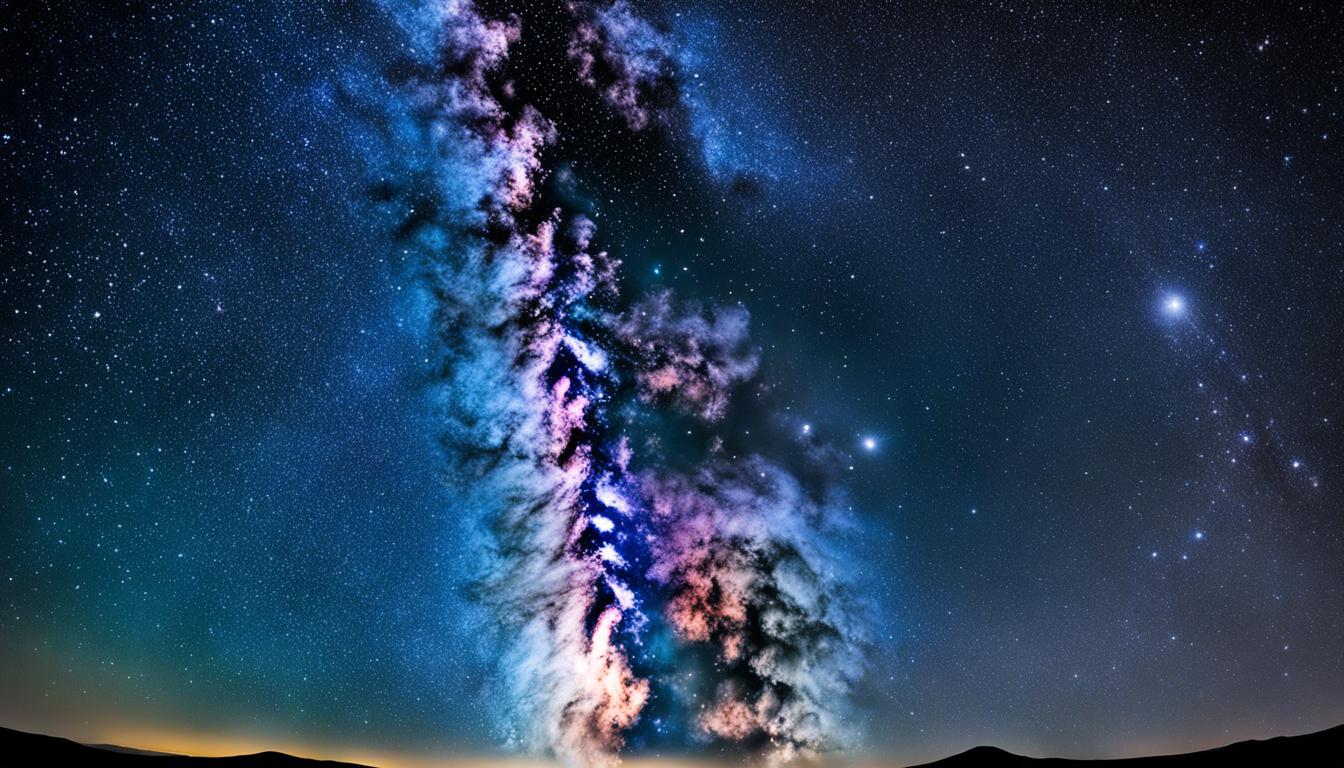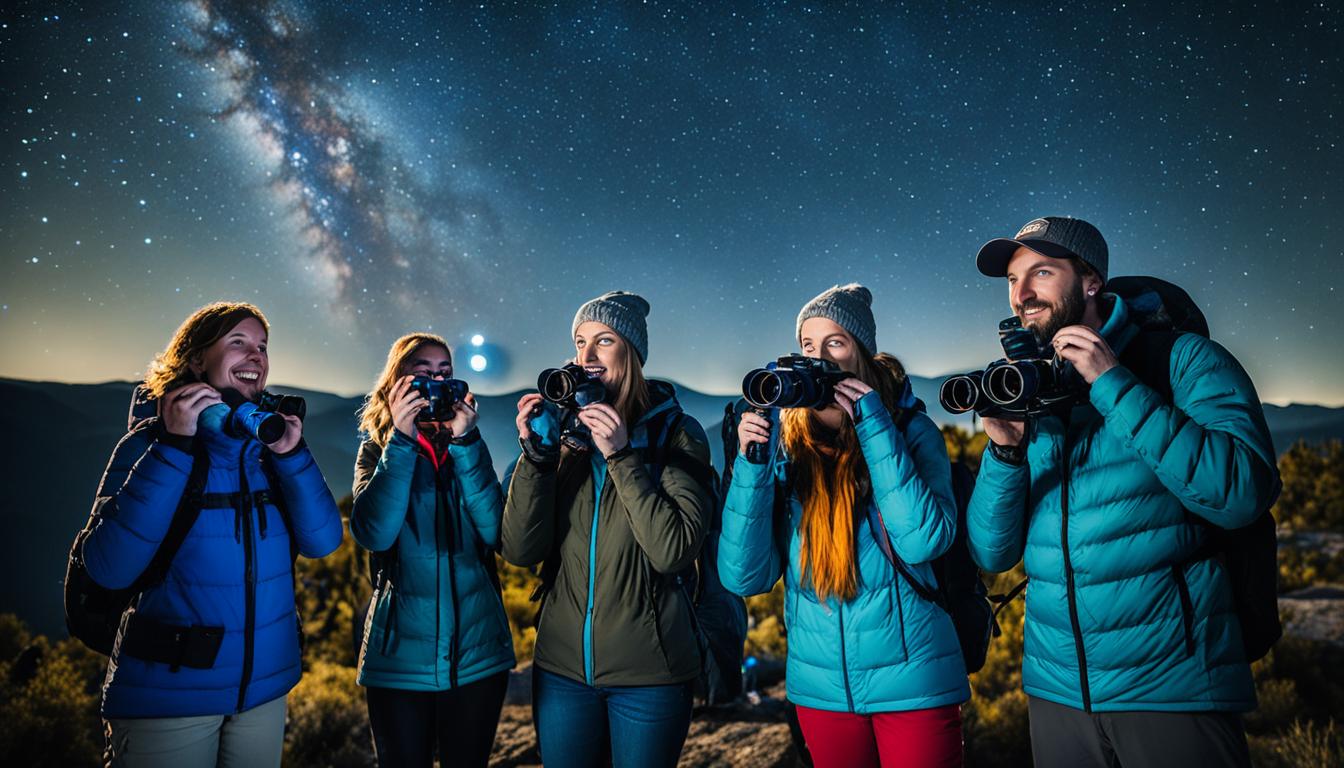Astrophotography is a mesmerizing way to capture the beauty and majesty of the universe. With the right equipment and techniques, we can photograph stunning deep sky objects like nebulae, galaxies, and star clusters, revealing the wonders that exist beyond our reach. In this guide, we will provide you with expert tips on how to master the art of deep sky astrophotography, allowing you to capture breathtaking images that will leave you in awe.
Astrophotography opens up a whole new world of photography, where we can explore and capture celestial objects that are millions of light-years away. From the vibrant colors and intricate details of nebulae to the spiral arms of galaxies and the dense clusters of stars, each image tells a unique story about our place in the cosmos.
Whether you are a beginner or an experienced photographer, this guide will equip you with the knowledge and techniques to enhance your astrophotography skills. We will cover everything from selecting the right equipment, understanding camera settings, and planning your photo shoots to post-processing your images for stunning results. With our guidance, you will soon be able to capture the cosmos like never before.
Key Takeaways:
- Deep sky astrophotography allows us to capture the beauty and vastness of the universe.
- Photographing nebulae, galaxies, and star clusters requires specific equipment and techniques.
- Mastering camera settings such as aperture, ISO, and focus is crucial for astrophotography success.
- Planning your photo shoots and understanding the night sky will help you capture the best images.
- Post-processing your images using software can enhance the final results.
What is Astrophotography?
Astrophotography is a captivating photography genre that allows us to capture the beauty and wonder of celestial objects beyond our solar system. Through the lens of a camera, we can explore the vastness of the universe and reveal intricate details that our eyes often miss. This photography genre, centered around capturing the majesty of the universe, requires a specialized approach and a passion for both photography and astronomy.
With astrophotography, we can capture a variety of deep sky objects that are otherwise invisible to the naked eye. From stunning star clusters to mesmerizing nebulae and distant galaxies, astrophotography reveals the cosmic artistry that surrounds us. It is a blend of art and science, combining technical skills and artistic vision to create breathtaking images that showcase the grandeur and complexity of the universe.
To fully appreciate and master astrophotography, it’s important to understand the unique challenges and techniques associated with this photography genre. Unlike traditional photography, astrophotography often requires long exposures, specialized equipment, and extensive post-processing to bring out the intricate details of deep sky objects. Patience, perseverance, and a deep fascination with the universe are essential qualities for aspiring astrophotographers.
Whether you are an experienced photographer venturing into the realm of astrophotography or a beginner intrigued by the vastness of the universe, this guide will equip you with the knowledge and techniques to embark on your astrophotography journey. From exploring different types of deep sky objects to capturing awe-inspiring photographs, we will guide you through the fascinating world of astrophotography.
“Astrophotography is an invitation to explore the beauty and mysteries of the universe through the lens of a camera.”
Types of Astrophotography
Astrophotography offers a range of captivating techniques to capture the wonders of the cosmos. Each type of astrophotography has its own unique approach and mesmerizing results. Whether you’re interested in the graceful motion of star trails or the intricate details of the Moon’s surface, there’s a technique that will ignite your passion for the night sky.
Star Trails

Star trails showcase the Earth’s rotation by capturing the mesmerizing circular paths created by the movement of stars across the night sky. It’s a fascinating technique that beautifully illustrates the passage of time and celestial motion.
Nightscape
Nightscape photography combines the captivating beauty of the night sky with terrestrial landscapes. By incorporating elements of the Earth into your composition, such as mountains, forests, or cityscapes, you can create stunning images that juxtapose earthly features with the captivating wonders of the cosmos.
Wide Angle Milky Way
Capturing the wide-angle view of the Milky Way galaxy is a popular astrophotography technique. By using a wide-angle lens, you can capture the vast expanse of our galaxy stretching across the night sky, adorned with countless stars and interstellar dust clouds.
Deep Sky
Deep sky astrophotography takes you on a journey through the universe by capturing distant galaxies, nebulae, and other celestial structures. With the use of telescopes and advanced equipment, you can reveal the breathtaking beauty of these deep-sky objects, unveiling their intricate details and cosmic mysteries.
Planetary
If you’re fascinated by the planets within our own solar system, planetary photography allows you to capture detailed images of these celestial bodies. Whether it’s the swirling storms of Jupiter or the majestic rings of Saturn, planetary photography enables you to document the captivating features of our neighboring planets.
Moon Surface
Exploring the Moon’s surface is a rewarding pursuit in astrophotography. By using telescopes and specialized camera equipment, you can capture sharp and detailed images of craters, mountains, and other lunar features, immersing yourself in the awe-inspiring landscape of Earth’s natural satellite.
What do I need for Astrophotography?
To get started with astrophotography, you will need a camera with manual control settings to have full control over aperture, shutter speed, and ISO. A DSLR camera or a mirrorless camera is recommended for its low-light capabilities and the ability to capture light in the darkest of settings.
For wide-angle shots, a wide-angle lens is preferred, while for deep-sky images, a telephoto lens or even a telescope can be used. A sturdy tripod is essential to keep the camera steady during long exposures.
| Equipment | Recommended Options |
|---|---|
| Camera | DSLR or Mirrorless Camera |
| Lens | Wide-angle Lens for wide-angle shots Telephoto Lens or Telescope for deep-sky images |
| Accessory | Sturdy Tripod |

“Astrophotography requires precision and control over your equipment. A DSLR or mirrorless camera with manual settings and a range of lenses will give you flexibility to capture stunning deep-sky images. Don’t forget the importance of a tripod to keep your camera steady during long exposures!”
Tips for Better Astrophotography
To achieve stunning astrophotography results, we need to understand and master the camera settings. By adjusting the aperture, ISO sensitivity, and focusing manually, we can ensure that our images are sharp and capture the beauty of the cosmos. Here are some tips to enhance your astrophotography skills:
- Camera Settings: Adjust the aperture to let in more light and increase the depth of field. Experiment with different ISO settings to find the balance between capturing enough light and avoiding excessive noise.
- Manual Focus: Use manual focus to ensure your subject is sharp. As the focus distance in astrophotography is often set to infinity, it’s important to check your lens’s focus markings and adjust accordingly.
- Long Exposures: Utilize long exposure times to capture sufficient light from distant celestial objects. Longer exposures allow more light to be recorded, revealing greater detail in your images.
- Image Stacking: Reduce noise and enhance image quality by stacking multiple exposures of the same scene. This technique involves aligning and merging images to create a final composite that is cleaner and more detailed.
- Calibration Images: Capture calibration images to further enhance the quality of your astrophotography. Calibration frames, such as dark frames, flat frames, and bias frames, help correct sensor imperfections and improve overall image accuracy.
Mastering these camera settings and techniques will elevate your astrophotography skills and allow you to capture stunning images of nebulae, galaxies, and star clusters. Remember, practice and experimentation are key. Now, let’s take a look at a complete table showcasing the recommended camera settings for astrophotography:
| Camera Setting | Recommended Value |
|---|---|
| Aperture | Wide open (lowest f-number) |
| ISO | Between 800 to 3200 |
| Shutter Speed | 15-30 seconds |
| Focus | Manual, set to infinity |
These settings provide a starting point for capturing breathtaking astrophotography images. Remember to fine-tune your settings based on the specific conditions, equipment, and desired creative vision for each shot. Happy shooting!
Mounts and Sky Tracking
When it comes to capturing stunning astrophotography images, accurate sky tracking is essential. This is where robust mounts, especially equatorial mounts, play a crucial role. Equatorial mounts are specifically designed to align with the Earth’s axis and compensate for its rotation, resulting in precise tracking during long exposures.
One popular option for astrophotographers is motorized mounts, which offer automatic tracking capabilities. With a motorized mount, you can ensure smooth and precise tracking without the need for constant manual adjustments. This allows you to focus on composing your shots and capturing the beauty of the cosmos.
For even greater accuracy, autoguider systems can be used in conjunction with motorized mounts. These systems employ guide cameras and software to analyze the tracking performance and make real-time adjustments. By detecting any deviations from the desired trajectory, autoguiding systems help to improve tracking accuracy, resulting in sharper and more detailed images.
In addition to mounts and autoguider systems, astrometry software plays a valuable role in astrophotography. Astrometry software assists in locating and capturing specific celestial objects by providing precise coordinates and aiding in accurate pointing and tracking. It enhances the accuracy and efficiency of your astrophotography sessions, ensuring that you can capture the most mesmerizing objects in the night sky.
“Accurate sky tracking is the key to capturing breathtaking images of celestial objects. Equatorial mounts, motorized mounts, autoguider systems, and astrometry software work together to ensure smooth tracking and enhance the quality of your astrophotography.”
Whether you’re photographing distant galaxies or intricate nebulae, investing in the right mounts and utilizing advanced tracking techniques can take your astrophotography to new heights.
| Mount Type | Tracking Capability | Advantages |
|---|---|---|
| Equatorial Mounts | Accurate and compensates for Earth’s rotation |
|
| Motorized Mounts | Automatic tracking |
|
| Autoguider Systems | Real-time adjustments |
|
| Astrometry Software | Precise object location |
|
Conclusion
Deep sky astrophotography is an awe-inspiring pursuit that allows us to capture the wonders of the universe. By applying the expert tips and recommendations provided in this guide, you can elevate your astrophotography skills and capture breathtaking images of nebulae, galaxies, and star clusters. With dedication and a willingness to experiment, the possibilities for creating extraordinary celestial photography are limitless.
Remember to exercise patience and persistence in your astrophotography journey. The cosmos reveals its secrets to those who are willing to invest time and effort. Each time you venture into the night sky, you have an opportunity to further refine your techniques and expand your creative vision.
Keep pushing the boundaries of your artistic expression and continue to learn from the stars. By honing your photography skills and exploring the depths of the universe, you can capture astonishing images that showcase the beauty and grandeur of our cosmic surroundings. With every click of the shutter, you have a chance to share the wonders of the universe with the world.
FAQ
What is deep sky astrophotography?
Deep sky astrophotography is the art of capturing celestial objects beyond our solar system, such as nebulae, galaxies, and star clusters. It allows us to capture images of the universe and reveal the beauty and vastness that our eyes cannot see.
What are the different types of astrophotography?
There are various types of astrophotography, including star trails, nightscape, wide-angle Milky Way, deep sky, planetary, and moon surface photography. Each type involves a unique approach and process to capture stunning images of celestial objects.
What equipment do I need for astrophotography?
To get started with astrophotography, you will need a camera with manual control settings, such as a DSLR or mirrorless camera. Wide-angle lenses are preferred for wide-angle shots, while telephoto lenses or telescopes can be used for deep-sky images. Additionally, a sturdy tripod is essential to keep the camera steady during long exposures.
What camera settings should I use for astrophotography?
To achieve stunning astrophotography results, it’s important to adjust the aperture to capture more light, set the ISO sensitivity appropriately, and use manual focus to ensure sharp images. Long exposures are often used to capture sufficient light, and image stacking can be employed to reduce noise and improve image quality. Capturing calibration images also helps enhance the final results.
What are the options for mounts and sky tracking in astrophotography?
Robust mounts, especially equatorial mounts, are crucial for accurate sky tracking during long exposures. Motorized mounts with automatic tracking capabilities ensure smooth and precise tracking. Autoguider systems can be used to make adjustments in real time and improve tracking accuracy. Astrometry software can aid in finding and capturing specific celestial objects.
What are the Best Tips for Photographing the Cosmos and the Solar System?
When diving into planetary photography, solar system enthusiasts need to consider investing in a telescope with a sturdy mount. Additionally, utilizing a specialized camera with high ISO capabilities can help capture vivid details of distant planets and stars. Patience and practice are key to achieving stunning photos of the cosmos.




